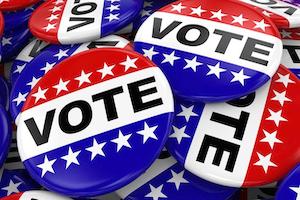General Discussion
Showing Original Post only (View all)Election Fraud Prevention for the 2018 Midterms, And Beyond -- Dale Tavris [View all]
Dale Tavris is DU's Time for change.

Dale Tavris -- World News Trust
Oct. 1, 2018
There is a vast amount of evidence that election fraud in the United States has been rampant during the 21st Century, and that it almost always favors the Republican Party. It likely resulted in Republican victories in the Presidential elections of 2000, 2004, and 2016, as well as myriad Republican wins in U.S. House, Senate and state governorship races, even in years with net Democratic gains. (See links below this story to Dale's informative eight-part series Election Fraud in The United States 2004-Present.)
Although the capacity for right-wing-perpetrated election fraud in the United States today is substantial, it is nevertheless finite rather than infinite. Therefore, it can be overcome to some extent with large Democratic turnout AND by taking certain precautionary measures. With that in mind, here are some things (not a complete list) we can do to prevent election fraud in the coming midterms:
Prevention of illegal voter registration purging
The most egregious incident of illegal voter registration purging that I’m aware of is the Presidential election of 2004. In that election, George W. Bush won the state of Ohio (which Bush needed for his Electoral College victory) by about 110,000 votes. Later extensive investigation revealed the apparent illegal purging of approximately 165,000 votes from highly Democratic Cuyahoga County alone, in the months preceding the 2004 election. There was also evidence of illegal voter purging targeted against Democrats in other Ohio counties. With all that, and with more than 155,000 provisional ballots remaining uncounted when the final election results were tallied, it appears likely that illegal voter registration alone made a critical difference in the 2004 Presidential election. It is probably significant that Kenneth Blackwell, the Ohio Secretary of State responsible for the conduct of Ohio elections in 2004, also served as a co-chair of the Bush campaign in Ohio that year.
The key to preventing this sort of thing is to make every effort to ensure that registered voters stay registered. Individual voters can contribute to this by periodically ascertaining their own voter registration status, and taking appropriate remedial action if they find that their registration has been purged. Beyond that, those concerned about election integrity can periodically check on the overall status of voter registration in their state. If they observe suspicious declines in voter registration in the run-up to an election, especially if it is found to disproportionately affect a specific political party, they should bring that to the attention of public figures in a position to do something about it prior to the election.
Prevention of central tabulator-mediated election fraud
On Election Day, every county uses a central county tabulator to tabulate votes from each of its precincts to arrive at total county results. Central tabulator fraud is where vote counts are altered at the central tabulator level. In that case, the pre-calculator results (i.e. the cumulative votes from every precinct in the country, prior to being sent to the central tabulator) would differ from the post-calculator results (i.e. the totals tabulated by the central county tabulator). There is evidence that this likely affected thousands or tens of thousands of votes in Ohio in the 2004 Presidential election, notably from Cuyahoga and Miami counties.
In theory, the prevention of this type of fraud is relatively simple. The final results at every precinct are supposed to be posted for public viewing shortly following poll closing. All we need to do is have one volunteer from each precinct in each country (in states or districts where elections are expected to be competitive) ascertain and photograph the results at their precinct. Then, if the results of an election seem suspicious, we need to compare the pre-calculator counts to the post-calculator counts. If discrepancies are found, they must be resolved.
Prevention of electronic vote switching fraud
The most secure voting system to prevent electronic manipulation of our vote is one where all counting of votes is done by hand rather than by machine. I say that because the process of ensuring that machines count our votes honestly is complicated, with many opportunities for failure. Consequently, we should not entrust the counting of our votes to corporations, using computers or any other means that produce results that cannot be verified. In order for votes to be verifiable, they must be available in a physical form – not just on a computer, which can be programmed to miscount the votes. However, it is probably too late to decide how our votes will be counted for the 2018 midterms. As best I can tell, that has already been determined.
As of the 2016 U.S. Presidential election, 28 percent of registered voters lived in DRE only jurisdictions and another 19 percent lived in jurisdictions where both DRE and optical scan voting systems were in use. DRE (Direct Recording Electronic) voting machines are those that directly record the voter’s vote electronically. Some DRE machines produce “voter-verified paper audit trails” (VVPAT), along with the electronically recorded vote, and others produce no such paper trail. Where DRE machines without paper trails are used, there is no way to do recounts for close or controversial elections, except to re-run the same machines that gave us the original count. Such systems are often referred to as black box voting because the American people have no way to ensure that the votes counted by such machines are counted honestly. When election integrity activists have asked to examine such machines for malicious software codes (for example, in the Presidential elections of 2004 and 2016, where large and highly suspicious deviations were identified between exit polls and official vote counts in critical states), they have routinely been denied access to the machines on the grounds that they are “proprietary” -- i.e. privately owned. There are currently five states that use only paperless voting systems: Delaware, Georgia, Louisiana, New Jersey, and South Carolina. And there are currently eight additional states that use paperless DREs as the primary voting method in at least some jurisdictions: Arkansas, Indiana, Kansas, Kentucky, Mississippi, Pennsylvania, Tennessee, Texas, and Virginia.
Even where paper trails do exist (mostly DREs with VVPATs or optical scan machines), they are of little or no use unless valid hand recounts of the paper ballots are done. Yet, whenever election integrity activists have attempted to obtain hand recounts for controversial elections they have faced tremendous obstacles. Either the recounts are fraught with nearly impenetrable barriers or they have been conducted in a way that inspires no confidence. For example, in 2016, the effort to obtain recounts in five states that were surprisingly won by Donald Trump fell to Jill Stein (because the law says that only Presidential candidates can request recounts, and Hillary Clinton did not request any). In order to obtain recounts of those states, Stein had to quickly raise several million dollars, and even the several million dollars she raised was only enough to meet the costs for three of the five states (She had no money left for recounts in Florida or North Carolina).
The Trump campaign then fought her efforts to obtain recounts in the three states where Stein met the cost requirements. The end result was that courts in Pennsylvania and Michigan supported the Trump campaign’s effort to block the recounts, while a Wisconsin court agreed to a recount, but specified that individual counties could elect to simply “recount” votes by re-running the same machines that provided the original count, rather than do hand recounts of paper ballots. This invalidated the whole recount in Wisconsin because any serious errors that might have occurred in the machines were likely limited to those counties that elected to recount the votes by machine rather than to perform hand recounts of paper ballots – which was the case in about one-half of the Wisconsin counties.
Consequently, the process of vote counting in the United States is not at all transparent, whether or not paper audit trails are potentially available for vote recounts. As noted by the Brennan Center for Justice, “Paper records of votes have limited value against a cyberattack if they are not used to check the accuracy of the software-generated total to confirm the veracity of election results.”
Therefore, if we are to prevent this kind of election fraud we must have the right to demand and receive hand recounts of paper ballots in elections that are suspicious. Our suspicions should be aroused, among other circumstances, in elections where results differ substantially from exit polls or post-election audits, or, when these are not available, from pre-election polls.
***
It is a terrible mark against our democracy that, as noted above, it is so difficult to obtain hand recounts of paper ballots in our country. That must be changed if our democracy is to survive. Our election system must be oriented towards obtaining accurate vote counts above all else. That means facilitating and paying for, rather than obstructing valid hand recounts of paper ballots for all suspicious election results.
Elections are a public, not a private matter. To the extent that private individuals or corporations have any role to play in our elections at all, they have no right whatsoever to restrict the public from examining any and all evidence pertaining to the counting of our votes, before, during or after elections. The fact that in a nation that calls itself a democracy, we have allowed private corporations (usually with obvious vested interests in the outcome of the elections) to count our votes and then successfully restrict the public from examining evidence that could help to resolve questions about the integrity of the election, is absurd.
***
Election Fraud in the United States: 2004 to Present (Eight Parts)
PART I: Vulnerability of Electronic Vote Counting in U.S. Elections
https://worldnewstrust.com/election-fraud-in-the-united-states-2004-to-present-part-i-vulnerability-of-electronic-vote-counting-in-u-s-elections-dale-tavris
PART II: Evidence for Election Fraud in Exit Poll Discrepancies from Official Results
https://worldnewstrust.com/election-fraud-in-the-united-states-2004-to-present-part-ii-evidence-for-election-fraud-in-exit-poll-discrepancies-from-official-results-dale-tavris
PART III: The Validity of Exit Polls for Monitoring Elections
https://worldnewstrust.com/election-fraud-in-the-united-states-2004-to-present-part-iii-the-validity-of-exit-polls-for-monitoring-elections-dale-tavris
PART IV: Untimely Deaths Associated with the 2004 Presidential Election
https://worldnewstrust.com/election-fraud-in-the-united-states-2004-to-present-part-iv-untimely-deaths-associated-with-the-2004-presidential-election-dale-tavris
PART V: Disallowed and Corrupted Vote Recounts in Presidential Elections
https://worldnewstrust.com/election-fraud-in-the-us-2004-to-present-part-v-disallowed-and-corrupted-vote-recounts-in-presidential-elections-dale-tavris
PART VI: Evidence for Election Fraud in Election Machine "Glitches"
https://worldnewstrust.com/election-fraud-in-the-us-2004-to-present-part-vi-evidence-for-election-fraud-in-election-machine-glitches-dale-tavris
PART VII: Voter Suppression
https://worldnewstrust.com/election-fraud-in-the-united-states-2004-to-present-part-vii-voter-suppression-dale-tavris
PART VIII: The Way Forward
https://worldnewstrust.com/election-fraud-in-the-united-states-2004-to-present-part-viii-the-way-forward-dale-tavris
***

Dale Tavris, M.D.
Dale Tavris has worked as a public health physician/epidemiologist for 40 years, with state departments of public health, the U.S. Air Force, the Medical College of Wisconsin, and the Food and Drug Administration. In that capacity, he has authored 39 publications in peer-reviewed medical or public health journals.
Since 2004 he has been actively involved in the national election reform movement, serving in a volunteer capacity with the Election Defense Alliance for a few years as their data coordinator.
He has written dozens of online articles about election fraud. In 2007 he co-authored a journal article on election fraud: “Fingerprints of Election Theft: Were Competitive Contests Targeted.”
Tavris has written and published three books, including two of a political nature: “The Unfulfilled Promise of the American Dream: The Widening Gap between the Reality of the United States and its Highest Ideals,” 2011; and “Democracy Undone: Unequal Representation, the Threat to our Election System, and the Impending Demise of American Democracy,” 2012.